Last updated on February 13, 2024

Winota, Joiner of Forces | Illustration by Magali Villeneuve
Anyone who's played Standard, Historic, or Pioneer since Ikoria: Lair of Behemoths knows Winota, Joiner of Forces. The velocity Winota creates in closing out a game is still unmatched.
With Pioneer trending towards a battlefield-matters format where combat, math, and creature sizing are important, recent additions push Winota lists to the top tier of playable decks in the current meta. The major reason it isn’t a tier 0 deck is Izzet Phoenix. The premier deck in the format is a close matchup where I’d favor an experienced Phoenix pilot over Winota.
With Phoenix being a large share of the winner’s metagame, the version that I’ll be covering today works to mitigate the matchup in the sideboard: Naya Winota Werewolves. These recent changes keep this build at the top tables, even now.
Let’s take a look!
The Deck

Temple Garden | Illustration by Titus Lunter
Creatures (30)
Elvish Mystic x4
Gilded Goose x2
Llanowar Elves x4
Prosperous Innkeeper x4
Selfless Spirit x2
Brutal Cathar x4
Tovolar, Dire Overlord x2
Winota, Joiner of Forces x4
Tovolar's Huntmaster x4
Enchantments (3)
Ranger Class x3
Artifacts (4)
Lands (23)
Battlefield Forge x2
Branchloft Pathway x4
Stomping Ground x4
Temple Garden x4
Cragcrown Pathway x4
Forest
Inspiring Vantage
Lair of the Hydra
Needleverge Pathway x2
Sideboard (15)
Eidolon of Rhetoric x4
Elite Spellbinder x4
Rending Volley x3
Rest in Peace x2
Skyclave Apparition x2
The Strategy
Major highlights from this updated build include the werewolf package, two Gilded Gooses to up the turn 1 mana creature count from eight to ten, and the slick new sideboard. While most of the slots in this deck have stock from previous versions of the build, removing the double damage effects like Blade Historian and Angrath's Marauders allows this list to function without its best draws. Moving from an all-in creature combo deck to a midrange build that can kill with a creature combo allows its ceiling to remain high while improving its floor.
Mana Accelerants
Starting with the deck’s many 1-drops we have Elvish Mystic, Llanowar Elves, and Gilded Goose. This deck works to create a mana imbalance that’s especially daunting on the play or left unanswered. These 1-drops make sure that your opponent ends up falling behind without a turn 1 interaction.
Prosperous Innkeeper continues to accelerate your deck while giving incidental life gain against decks that’d otherwise race your starts. Dealing with decks that can interact with your 1-drop creatures often comes down to having a card like Innkeeper that ramps without needing to survive.
Werewolves, Wolves, and Cats
After accelerating in the first turns of the game, this deck quickly moves into the midrange plan of playing above-rate werewolves in Brutal Cathar and Tovolar, Dire Overlord. These immediately clear the path of troublesome creatures and require immediate answers or they start to snowball the game.
Tovolar's Huntmaster can also come down early from mana acceleration and creates an overwhelming board presence reminiscent of Grave Titan. While Huntmaster usually comes from Winota, Joiner of Forces triggers, the card only costing in a deck with so much ramp makes it a viable alternative win condition even without Winota.
Value Engines
You also have Ranger Class and Esika's Chariot as value engines that create non-human bodies and threaten to create an overwhelming board state. In matchups where the board stalls and you don’t have Winota, these cards continue accruing value until the deck’s namesake arrives to end the game.
Winota the Wincon
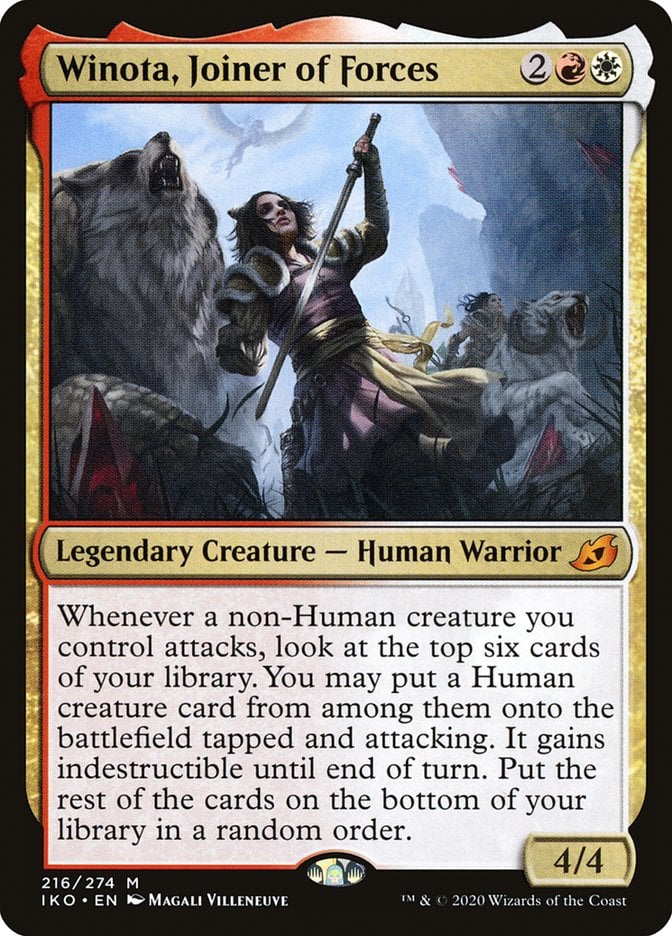
Winota, Joiner of Forces is not an “okay Magic card.”
The cards I’ve already gone over include plenty of non-human creatures that can trigger Winota’s ability. Whether they’re tokens or werewolves that come out when it’s nighttime, these non-humans allow Winota to trigger when they attack. Night also only affects the on-board werewolves so you can take any werewolf or an additional Winota to apply massive pressure to your opponent.
It isn’t always fancy, but Winota will single-handedly end games and put your opponent in a constant strain of holding up interaction while falling further behind on board. You usually won’t cast your Winota without a backup or until you forced out counterspells or removal with your other threatening cards.
Once you’ve established protection via Selfless Spirit or your opponent taps out, you can slam Winota and hammer the nail into the coffin.
The Lands
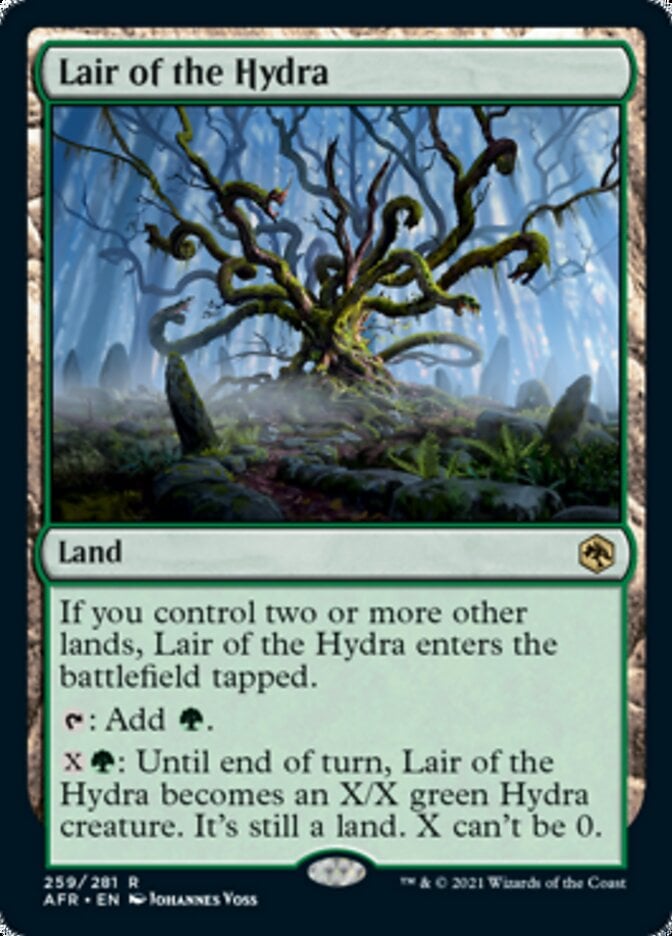
There isn’t too much to delve into with this mana base. It skews heavily green on turn 1, uses Lair of the Hydra as an additional threat that doesn’t die to wrath effects, and every land gives you the option to tap for whatever color you need to cast your current haymakers.
You should start making sure you have white, red, and a second green mana source once you’ve got your first green land with the heavy color requirements of the deck. This list can’t function without a turn 1 green source, so keep that in mind when considering mulligans.
Tips, Tricks, and Mulligans
- Mulligan aggressively with this deck! You have ten 1-drops that accelerate you, eight 4-drops that are your primary threats, and tons of green sources. If you don’t have at least one of each, consider what you could be playing against and if you’re keeping an overly fair hand. While this version of the deck is much better at playing a fair game, remember that’s your backup plan. Don’t be afraid to regularly go down to five cards in creature matchups. I’ve won on as low as a mull to three in the mirror before.
- Level up Ranger Class whenever you can, especially if you have the option between playing more mana dorks or leveling up. The extra counter can help a lot with outsizing other creature decks and making sure your opponent has to use removal on your less important creatures to avoid getting run over, which allows you to resolve an Esika's Chariot or Winota, Joiner of Forces uncontested.
- Tovolar, Dire Overlord has a special clause that most players miss. At the beginning of your upkeep, it becomes Night if you control three or more wolves or werewolves. Ranger Class, Brutal Cathar, Tovolar's Huntmaster, and the tokens it makes all count towards this total and will often catch your opponent by surprise. Keep this in mind with deciding whether to commit more to the board or flip to Night. You can keep applying pressure and flip the game to Night if you play the third wolf or werewolf!
- Don’t overly dilute your deck in sideboard games. Remember that you lower the chances of Winota, Joiner of Forces ending the game with each non-human you remove. Similarly, you make your Winota spins less likely to hit with each human you remove. Adding a human and removing a human obviously keeps the odds the same, but it starts to impact the odds as you add in non-creature spells.
Sideboard Guide
I recently read a quote from Magic World Champion Yuta Takahashi that I want to share:
Sideboard guides are required, but I don’t dare post them because you will improve more if you think for yourself rather than simply memorizing the answers.
Yuta Takahashi
I believe that if you’re here, you want to improve. I’ll do my best to breakdown the cards in the sideboard, why they’re there, and what style decks they attack so you can still get some valuable knowledge here.
Rending Volley
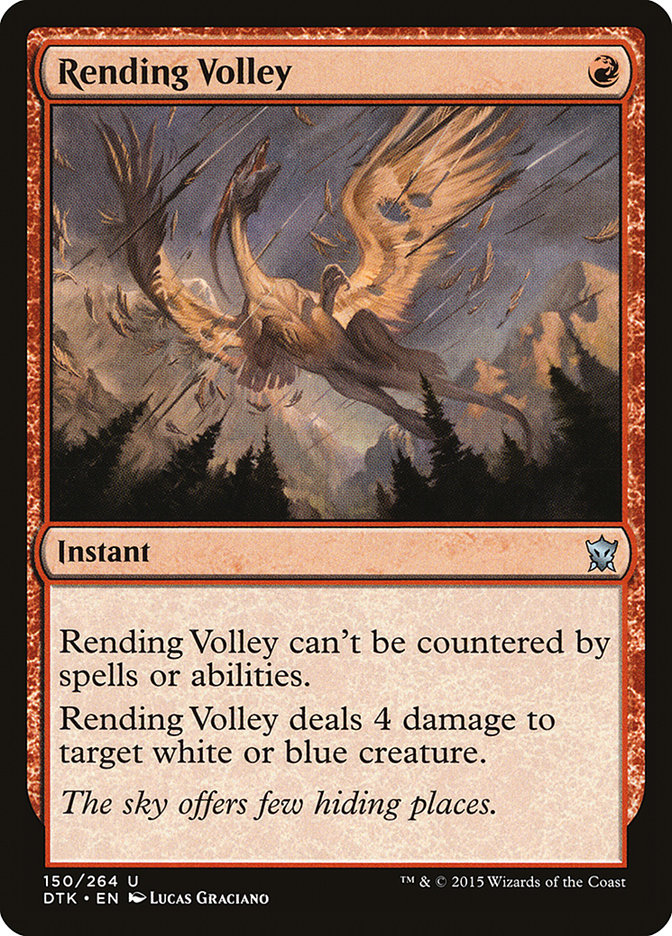
It’s important to remember what’s killing you when dealing with Izzet Pheonix. Thing in the Ice usually acts as a roadblock, a huge tempo swing, and a fast clock. Being able to answer it and Crackling Drake for one mana that can’t be countered is a huge upgrade in the matchup, especially since cards like Brutal Cathar are likely to die from the myriad of available removal spells.
Rending Volley is one of the narrowest sideboard cards and I’d expect it to stay in the sideboard unless you face Spirits or Izzet. There are few cards as effective at ensuring disruption to your opponent’s strategy as Volley in those matchups, though.
Rest in Peace
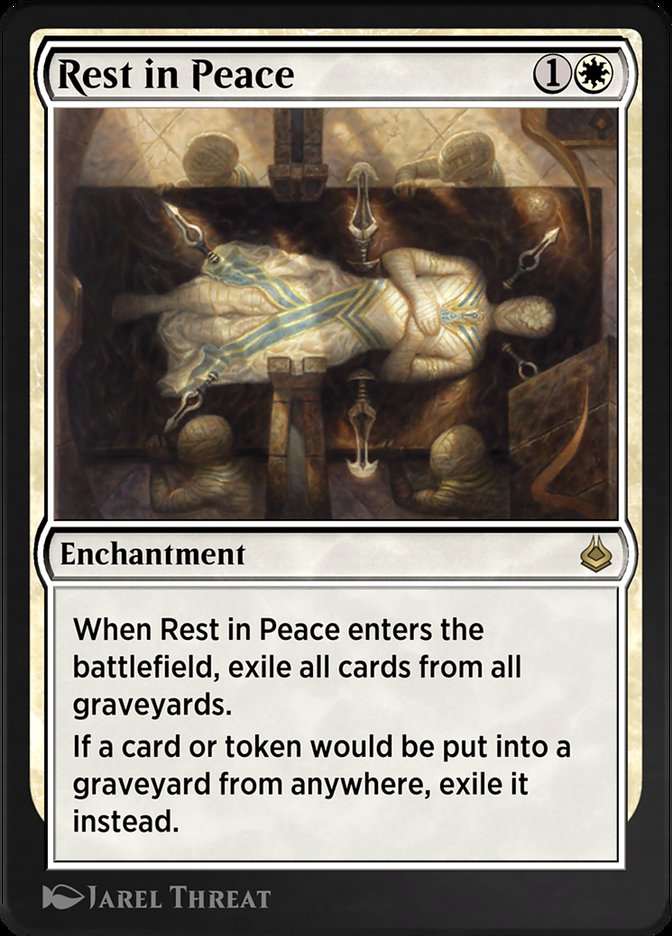
This deck doesn’t use your graveyard at all. Simply put, if your opponent uses the graveyard to garner an advantage, you want to disrupt that.
Decks that use Treasure Cruise, Kroxa, Titan of Death's Hunger, or Torrential Gearhulk all lose a lot of value if you can eliminate their graveyard. I’d caution against bringing Rest in Peace in without a specific reason, but any major element of your opponent’s deck relying solely on the graveyard warrants some consideration.
Eidolon of Rhetoric
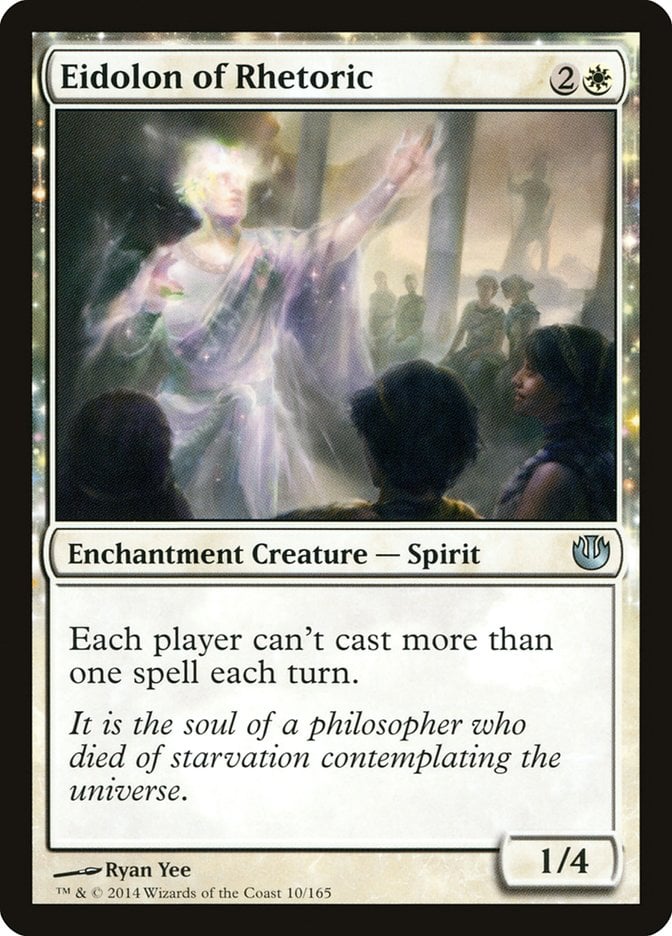
Jeskai Ascendancy Combo, Izzet Phoenix, Bring to Light, Lotus Field, and any prowess-based spell decks all hate Eidolon of Rhetoric. While those decks all play cards that can interact with a 1/4, Eidolon isn’t a particularly common sideboard answer in the meta right now. It often acts as a one to two turn roadblock for your opponent and that should be all the time you need to win the game in a deck as efficient as this.
If this Eidolon comes down on turn 2 and lives to turn 4, I expect you win against most spell-based combo decks. That said, don’t keep hands on Eidolon’s back since it doesn’t hard lock out these decks. You need this type of effect alongside a functioning hand.
Elite Spellbinder
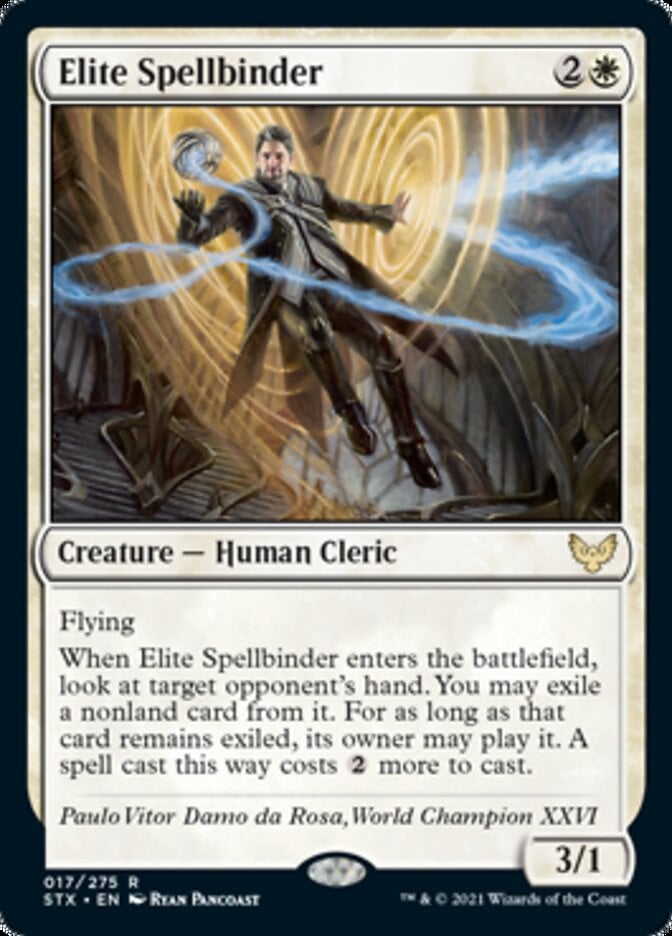
Elite Spellbinder acts as a pseudo-Miscalculation in this deck. Does your opponent play Anger of the Gods? Well, how good is it on turn 5 when you’re killing on turn 4? The same logic applies to cards like Extinction Event, Burn Down the House, Bring to Light, and many other pieces of interaction.
Spellbinder coming down on turn 2 can often clear the path for an Esika's Chariot into Winota, Joiner of Forces kill. I like Spellbinder in a lot of matchups, but a major reason it doesn’t make the main is because most decks bring in their interaction from the sideboard. In most matches, especially creature-heavy matchups, you want to be lean in game 1 and bring in your slower, more interactive cards like this post-board to deal with their answers.
Skyclave Apparition

Need Brutal Cathar five and six? Well, you have that right here. There aren’t too many creature matchups where having more interaction is a bad thing. Avoid bringing this card in matchups where Cathar isn’t good, like against removal-heavy decks.
Sometimes you can trade up in value against synergy-heavy decks like Burn by removing their better creature and turning it into a 1/1 or 2/2 with no text. Apparition has been a staple in white decks since its printing and it plays the same role here.
How Do You Beat Winota Decks?
If the answer to beating this deck was “you can’t,” then this would be the best deck in Pioneer. While it certainly is a tier 1 deck, it still has a long way to go to dethrone Izzet Phoenix as the best deck. The primary ways to answer Winota involve keeping the board clear with cheap interaction, countering haymakers like Esika's Chariot or Tovolar's Huntmaster that produce multiple bodies, and never letting Winota, Joiner of Forces make it to combat.
Heavy-removal control decks like Dimir can be tough, especially since the sideboard for this list moves more to deal with Izzet Pheonix. As you might suspect because of the number of cards in the sideboard for Izzet, that’s traditionally one of the hardest matchups thanks to their super cheap interaction, recursive threats, and Thing in the Ice flipping at instant speed.
There are a few cards that can really hurt this deck from the sideboard. The first is Grafdigger's Cage which stop the Winota triggers from mattering and can also turn off the Eldritch Evolution builds that were popular before Midnight Hunt. Cards that punish having to attack like Settle the Wreckage can also flip the race in your favor. You have to commit to answers like Settle without any reach, and that can really hamper your ability to rebuild. Especially with only one basic in the deck.
Understand that this deck has a fail rate. If you only draw mana dorks and a single Winota and your opponent kills it, there isn’t much in the way of card selection or card draw. You’re at the mercy of what hands you keep and how they play out against your opponent’s strategy. While this deck gets lots of free wins, you will suffer your share of free losses as well.
Wrap Up
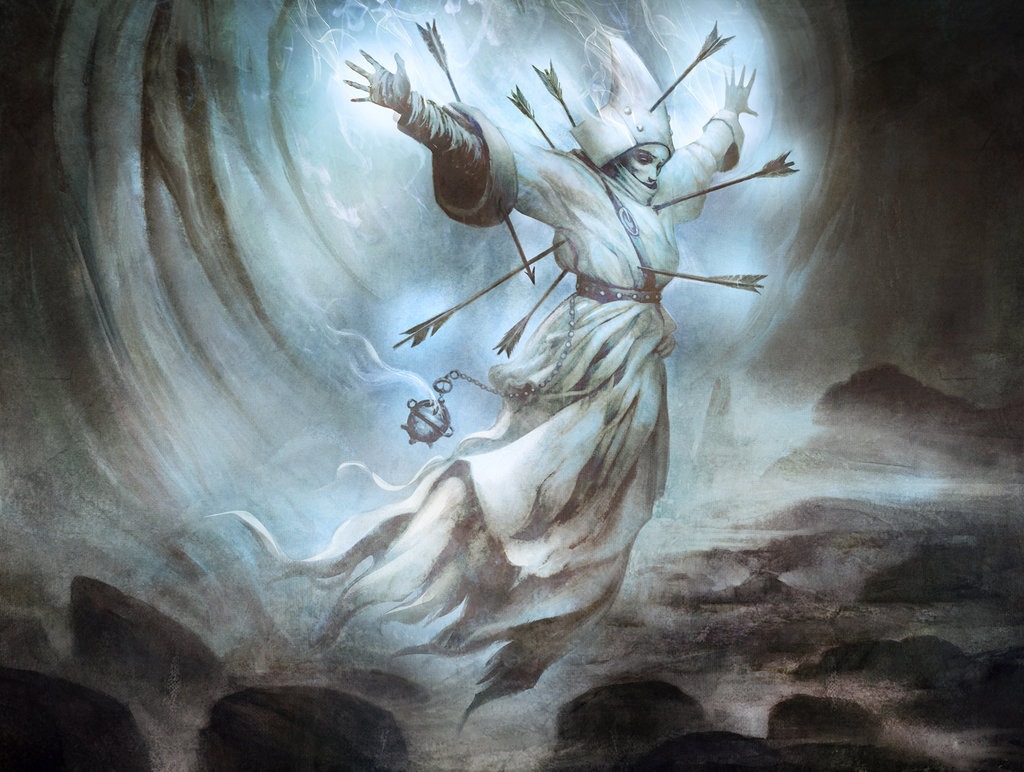
Selfless Spirit | Illustration by Seb McKinnon
This list continues to do very well in the Pioneer leagues, challenges, and Prelims whenever it happens to fire. I’m confident that this is a tier 1 deck destined to stay a part of the meta with the addition of better sideboard options for Izzet Pheonix. In a world of battlefield supremacy and spell-based combo decks acting as a foil, this build is well-positioned to attack both sides of the spectrum.
Let me know what decks you want to see detailed and how you’ve been enjoying the Pioneer metagame in the comments down below! Be sure to check out the Draftsim blog for more great content and deck guides, past and present.
Follow Draftsim for awesome articles and set updates:
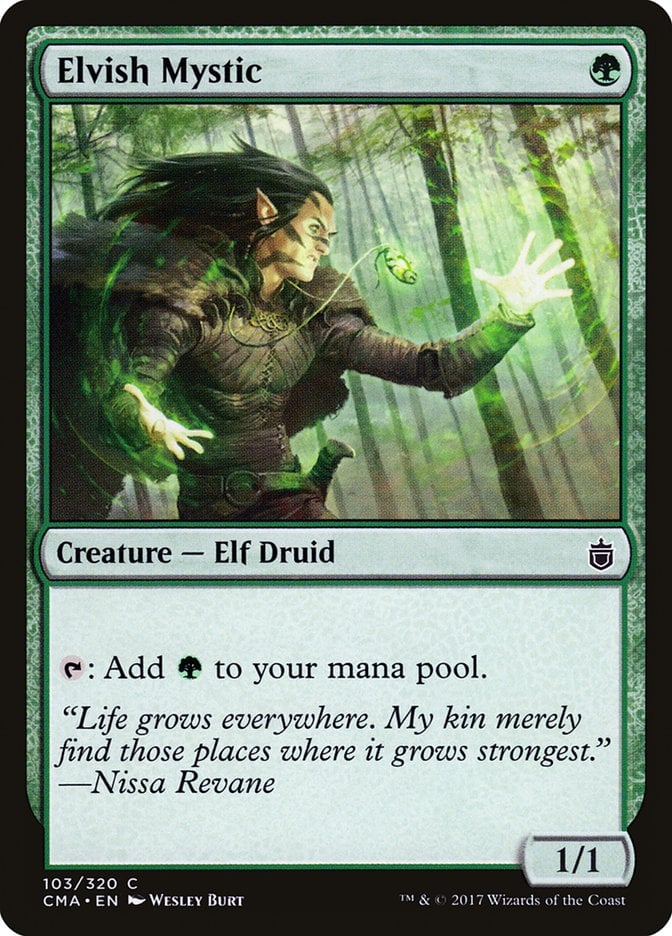
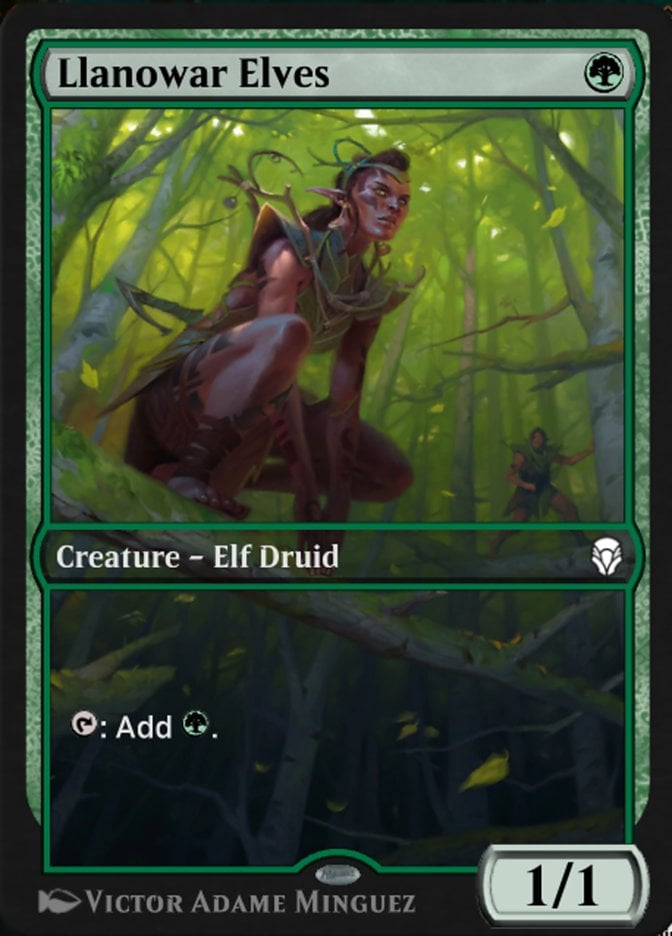


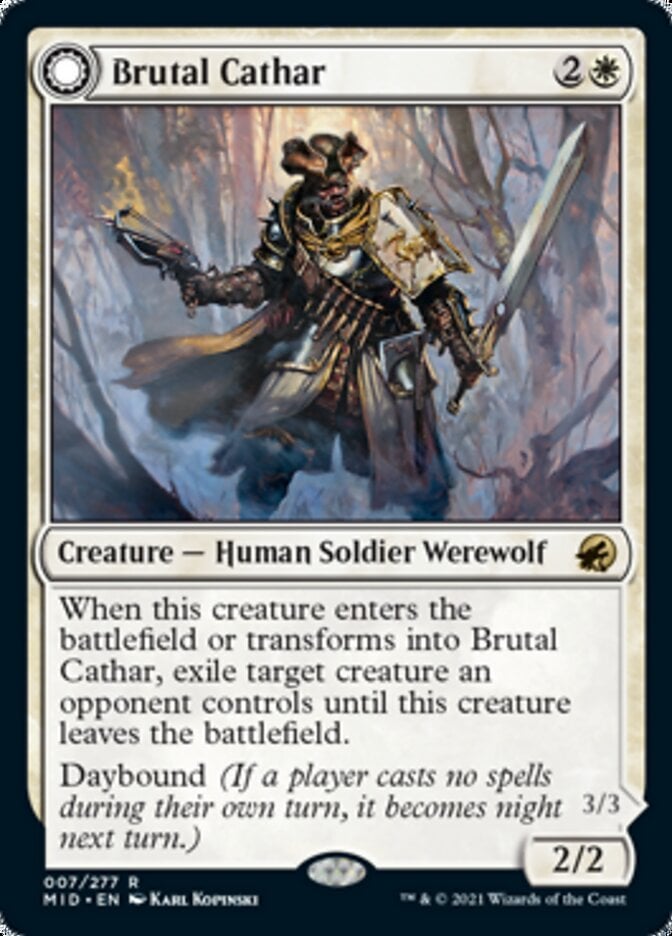

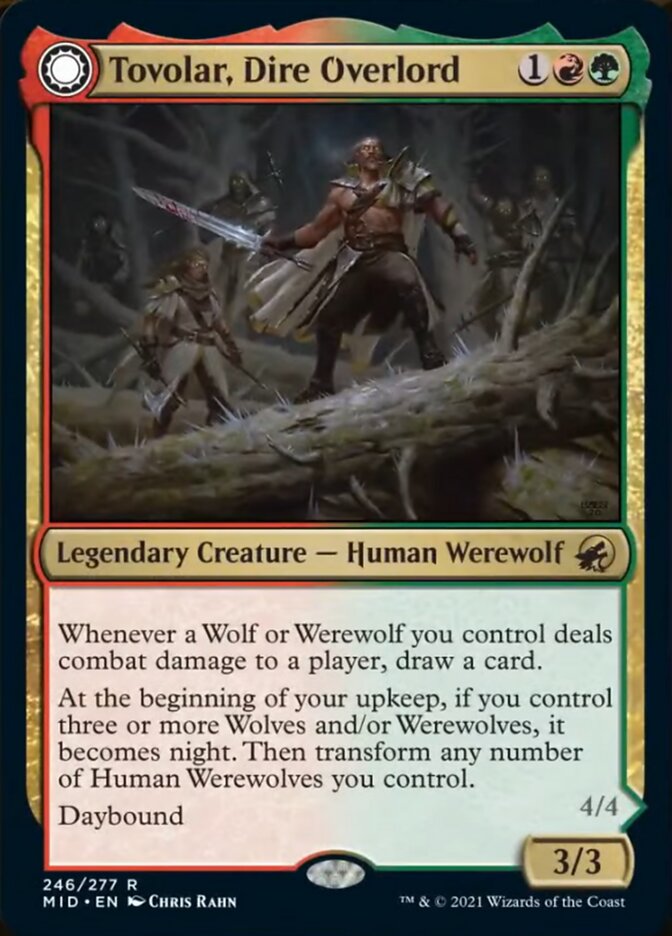

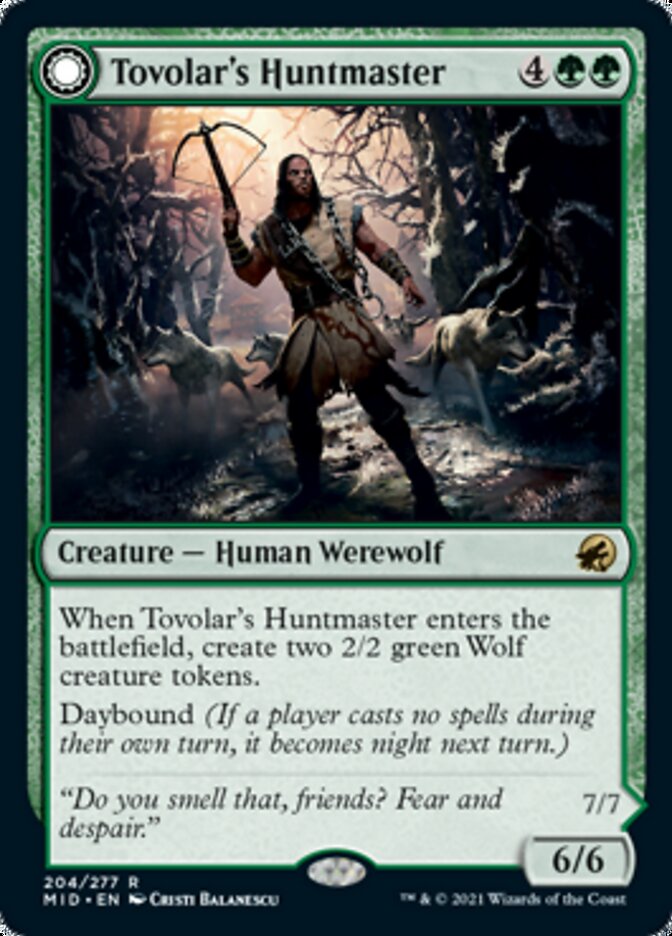

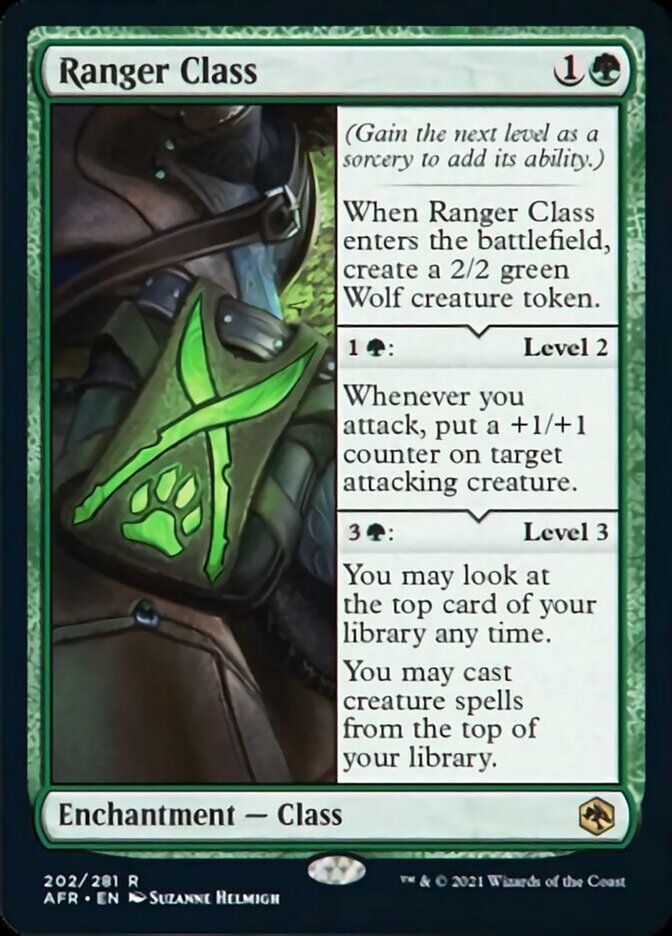
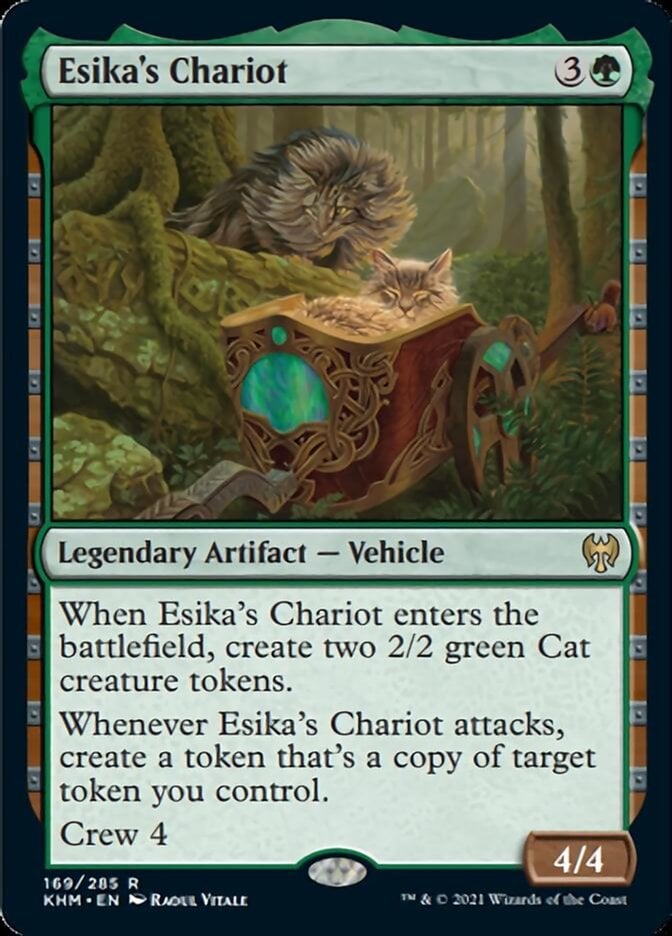

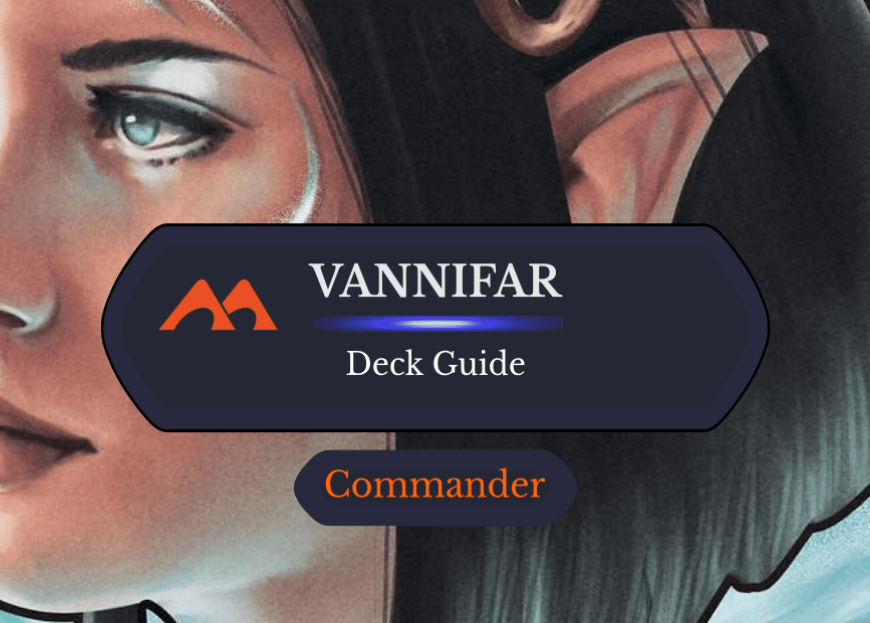
Add Comment